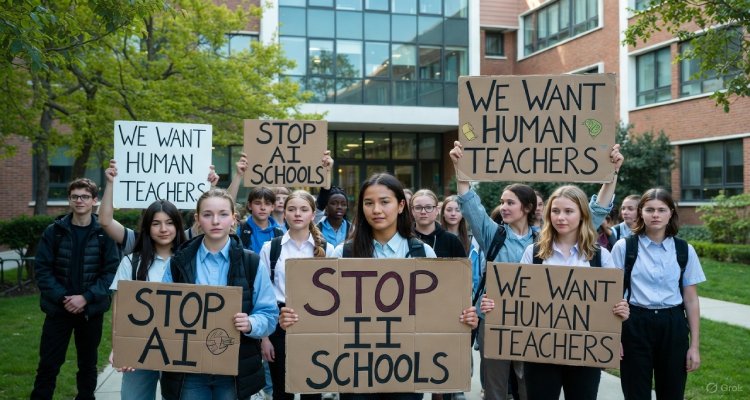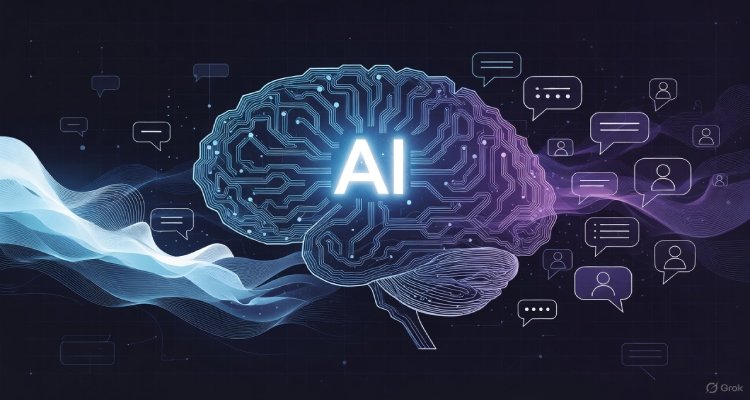The Rebellion of Students Who Refuse to Learn From Machines
A global wave of students is rejecting AI-driven classrooms, challenging the future of automated education and demanding a return to human-led learning.
Introduction: A Classroom Quietly Revolting
One by one, the students at a mid-sized university in California began closing their laptops. It wasn’t an act of teenage defiance, nor a protest against homework. This was a deliberate refusal—an organized stand against what they called “the algorithmic takeover of learning.”
Across campuses in the U.S., Europe, India, and Southeast Asia, a new movement is emerging. Students are rebelling—not against teachers, not against exams, but against the machines quietly replacing both. Their rallying cry is simple: We don’t want to learn from AI.
What began as scattered frustration is quickly becoming a global, youth-driven resistance challenging one of the fastest transformations in modern education.
Context & Background: The Machine-Centered Classroom
Over the past five years, AI technologies have reshaped classrooms with surprising speed. Schools turned to machine-generated lesson plans, AI tutors, automated grading, and adaptive learning platforms promising efficiency and personalization.
Governments encouraged the shift. EdTech companies marketed it as the “future of learning.” Teachers—overworked and understaffed—welcomed the support.
But somewhere in the streamlining, something essential began to disappear.
Students describe AI-based lessons that feel repetitive, overly optimized, emotionally flat. Many complain that algorithmic tutors don’t understand nuance, creativity, humor, or confusion—the messy, human elements that make learning authentic.
By 2025, a quiet tension was building. And then the rebellion began.
Main Developments: The Spark That Ignited the Movement
The turning point came at a high school in Toronto, where administrators replaced 60% of classroom instruction with AI tutoring modules. Test scores improved—but student engagement plummeted. A senior class staged a walkout, holding signs that read:
“We are not data.”
“Teach us like humans.”
“Learning ≠ Uploading.”
Videos of the protest went viral. Within weeks:
- Students in South Korea refused AI proctored exams
- College groups in the U.S. formed “Human Learning Circles” rejecting machine-generated course material
- A university in Spain paused an AI-first curriculum after students petitioned for human feedback
- India saw its own wave of protests, especially in STEM institutes where AI tutors replaced lab assistants
The rebellion is not rooted in nostalgia. These students grew up with technology. Their resistance is philosophical: they believe learning is a fundamentally human experience—one that algorithms cannot replicate.
Expert Insight & Public Reaction: A Divided Debate
Education experts are split.
Dr. Marissa Cole, a cognitive learning specialist, says students are raising valid concerns:
“AI can optimize information delivery, but it cannot cultivate curiosity, empathy, or resilience. Students are responding to an emotional void.”
But EdTech companies push back. Michael Trent, CEO of one of the world’s largest AI learning platforms, argues:
“Machines do not replace teachers; they amplify them. Students rejecting AI are rejecting opportunity.”
Parents are divided too. Some welcome efficient digital tools. Others see the student rebellion as a warning sign about over-automation.
On social media, the sentiment is loud:
- #LearnLikeHumans trended globally for two days
- Educators shared stories about losing “the spark” in AI-heavy classrooms
- Tech critics warned of a generation becoming “algorithm-dependant but emotionally underdeveloped”
Impact & Implications: A Turning Point for Global Education
The consequences of this rebellion could reshape education policy for decades.
1. Schools are rethinking AI-first teaching models
Administrators now face pressure to create hybrid systems where AI supports, but doesn’t replace, human educators.
2. Demand for emotional-intelligence-based learning is rising
The movement has revived interest in humanities, hands-on projects, mentorship, and classroom discussion—all experiences students say AI cannot replicate.
3. Policymakers are drafting regulations
Several governments are considering laws requiring:
- Human oversight of AI teaching tools
- Transparency in algorithmic decision-making
- Limits on automated grading
4. Hiring for teachers may increase
Ironically, the movement could trigger a revival of the teaching profession. Schools that reduced staff due to automation may need to rehire or retrain.
5. EdTech companies face an identity crisis
Platforms that once promised full automation now scramble to rebrand as “human-centered AI learning systems.”
Whether the movement succeeds or not, it has already forced a pause. A moment of collective self-reflection about what learning should feel like—and who should guide it.
Conclusion: A Stand for the Soul of Learning
The rebellion of students who refuse to learn from machines is not a rejection of technology. It is a demand for balance. A call for classrooms where algorithms assist—but humans inspire.
In a world sprinting toward automation, these students are asking a radical question:
What does it mean to learn, if not from another human being?
Their protest may ultimately redefine not just how we teach, but how society values human connection in an increasingly engineered world.
Disclaimer :This article is an original journalistic interpretation created for informational and editorial purposes. It does not claim or imply factual reporting of specific individuals or institutions unless otherwise stated.










